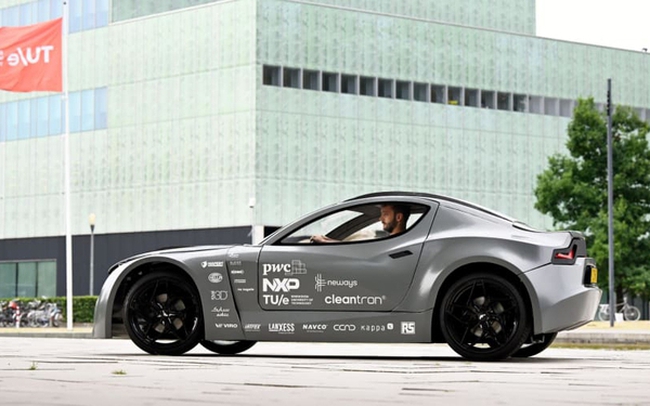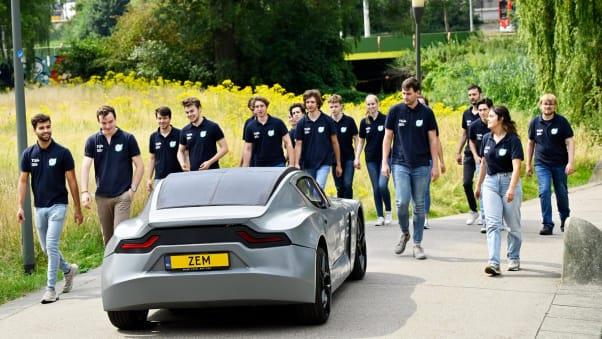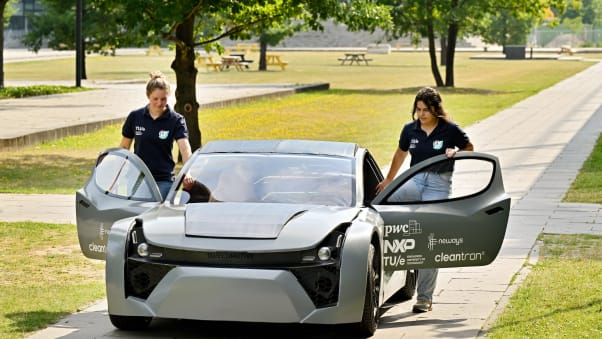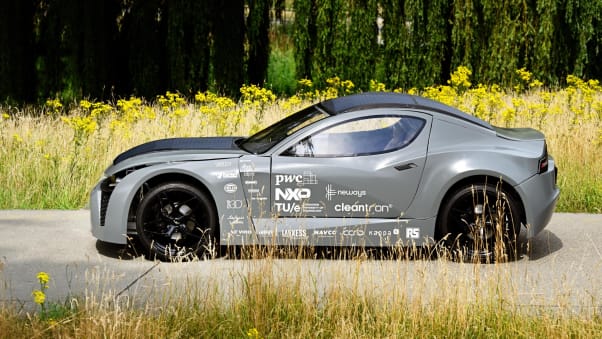Solar cars 'swallow' carbon: Impossible idea makes a breakthrough
Carbon capture technology plays an important role in removing CO2 from the air. This is expected to become a $7 billion industry by 2028. And this solar car is the beginning.

10-10-2022 Dry rivers spark a new crisis in the supply chain in the US
October 10, 2022 Despite OPEC + sharply cutting production, Saudi Arabia announced to pump enough oil for the region...
10-10-2022 Ironically, the supply bottleneck is loosened, new cars arrive massively, but many Americans...
Japan reopens: Aiming to earn 5 trillion yen from tourists
The 2022 Nobel Prize in Economics honors research on the financial crisis
China continues a large-scale blockade
With its silver color, smooth and strong styling, the car named Zem can match many other supercars in a championship race. But Zem is unlike any other car because it has a very special function. The Zem car prototype will help clean the carbon in the air when the car is running.
With a carbon capture device mounted under the car, the solar-powered car will absorb and store more CO2 than it emits. To cut waste and emissions during the manufacturing process, the body and chassis are 3D printed from recycled plastic. The interior of the car is wrapped in vegan leather from pineapple.
This is the creative work of a group of 35 students at Eindhoven University of Technology in the Netherlands. The product is also part of the university's TU/ecomotive project that encourages students to create cars based on cutting-edge technology.
"We put a lot of technology into one car to show what they can do together," said Louise de Laat, the team's project manager.
In the future, students hope their carbon capture technology will be found in existing vehicles and partly help reduce emissions from the one billion cars currently in circulation around the world.

The team of students took 9 months to develop the car and completed it in May 2022.
Photo: Bart van Overbeeke
A vehicle that "swallows" carbon
Since 2013, the TU/ecomotive project has invited students from different disciplines to collaborate on two-year innovation projects aimed at building sustainable vehicles.
The team's goal for 2021 is "zero emissions mobility," so they named the vehicle Zem. The vehicle is a combination of many partner sponsor technologies, such as lithium-ion batteries from Dutch company Cleantron and solar panels from Wattlab that provide up to 15% of the charge on cars.
A group of students are conducting a life cycle analysis using SimaPro software to calculate the carbon footprint of the car during production, use and afterlife.
After realizing that carbon neutrality could not be achieved, the team set out to find a way to filter carbon out of the air.
Zem has two filters under the car, next to the two front wheels. The air passes through the filter while the car is moving and the CO2 is trapped by a special particle inside. After every 320km drive, this filter needs to be cleaned. So the students designed a special electric vehicle charging station. Here, car owners can remove the amount of CO2 contained in the filter.
This CO2 can be reused in the production of other fuels, such as clean hydrogen, or stored underground to prevent CO2 from escaping into the atmosphere.
Although this device helps reduce some of the emissions when producing Zem, it still operates on a small scale. Currently the filters only capture 2kg of CO2 after nearly 32,200km, which is less than 1/10 of the average CO2 that trees absorb every year and only 0.04% of the annual emissions of a car. normally.
However, the team's car is a demonstration of a new idea. They are currently applying for a patent and management Laat is planning to develop and improve carbon capture technology in a startup.

Zem is 3D printed with recycled plastic and further supported from fiberglass or carbon fiber.
Photo: Bart van Overbeeke.
The "impossible" idea can make a breakthrough
While carbon capture technology plays an important role in removing CO2 from the atmosphere, development is still slow. According to the International Energy Agency (IEA), in 2020, 44 million tons of CO2 have been captured, just 13% of the target.
But more and more people are interested in this field. Billionaire Elon Musk also invests heavily in awards for improving carbon capture technology. This is expected to become a $7 billion industry by 2028.
Carlo van de Weijer, a researcher at Eindhoven University of Technology, said the amount of CO2 a car captures may be limited, but the prototype would be an important first step for the future.
The auto industry expert said: "If you think we can't reach a 100% fossil fuel-free or zero-carbon economy, we have to at least phase out CO2. out of the air".
The electric vehicle revolution has helped reduce emissions from vehicles, but waste in the production of these vehicles remains a dilemma. According to a 2021 report from the International Council on Clean Transport, the production of a mid-size electric vehicle in Europe emits more than 2 tons of CO2, equivalent to a conventional car.

nh: Bart van Overbeeke
Mr. Van de Weijer describes the goal of zero-emission vehicles as "bold, lucid thinking". But he says that strange ideas often lead to great breakthroughs. If the group's carbon capture technology is scalable, he says it could not only be retrofitted into cars, but could also function as a standalone technology.
- Launching Suzuki Ciaz 2021 new version, priced from 384 million
- The latest Ford Ranger price in May 2021 and specifications
- Launched Maserati Ghibli Hybrid Special Edition Love Audacious
- New Nissan Sunny received a deposit by the dealer, the price is predicted to be cheaper than Toyota Vios
- The 3rd Rolls-Royce Cullinan Black Badge returns to Vietnam with a "slightly tired" color interior
Operate and exploit advertising by iCOMM Vietnam Media and Technology Joint Stock Company.
116 Thai Ha, Trung Liet Ward, Dong Da District, Hanoi.
Email: [email protected]
Editor in chief: DeThi
Tel: (+84) 903076053/7 Fax: (+84) 903030935